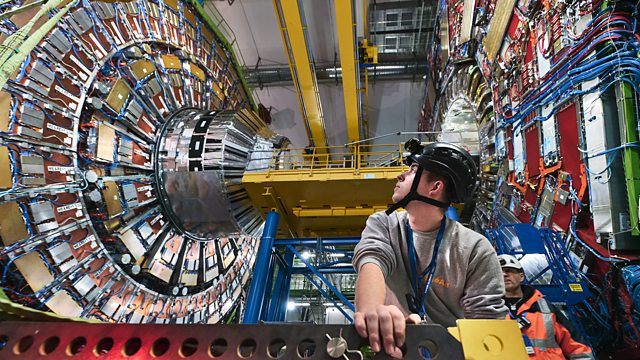Main content
The mysterious particles of physics, part 3
Roland Pease explores the 100-km atom smasher physicists are planning at CERN
The smaller the thing you look at, the bigger the microscope you need to use. That’s why the circular Large Hadron Collider at CERN, where they discovered the Higgs boson is 27 kilometres long, and its detectors tens of metres across. But to dig deeper still into the secrets of the Universe, they’re already talking about another machine 4 times bigger, to be built by the middle of the century. Roland Pease asks if it’s worth it.
Image: CMS Beampipe removal LS2 2019 (Credit: Maximilien Brice/CERN)
Last on
Mon 25 Jul 2022
00:32GMT
Βι¶ΉΤΌΕΔ World Service except Americas and the Caribbean
Broadcasts
- Mon 18 Jul 2022 19:32GMTΒι¶ΉΤΌΕΔ World Service except East and Southern Africa & West and Central Africa
- Tue 19 Jul 2022 03:32GMTΒι¶ΉΤΌΕΔ World Service Australasia, South Asia & East Asia only
- Tue 19 Jul 2022 04:32GMTΒι¶ΉΤΌΕΔ World Service Americas and the Caribbean
- Tue 19 Jul 2022 08:32GMTΒι¶ΉΤΌΕΔ World Service
- Tue 19 Jul 2022 12:32GMTΒι¶ΉΤΌΕΔ World Service except East and Southern Africa, East Asia, South Asia & West and Central Africa
- Tue 19 Jul 2022 19:32GMTΒι¶ΉΤΌΕΔ World Service East and Southern Africa & West and Central Africa only
- Mon 25 Jul 2022 00:32GMTΒι¶ΉΤΌΕΔ World Service except Americas and the Caribbean
Space
The eclipses, spacecraft and astronauts changing our view of the Universe
The Curious Cases of Rutherford and Fry
Podcast
-
![]()
Discovery
Explorations in the world of science.



